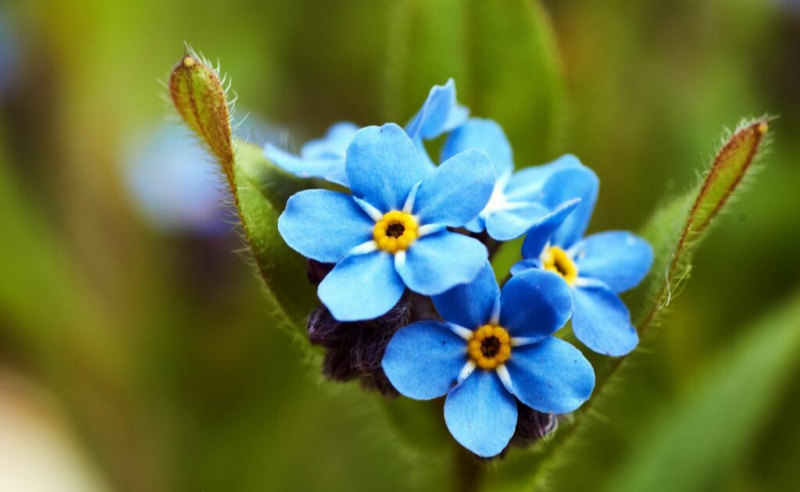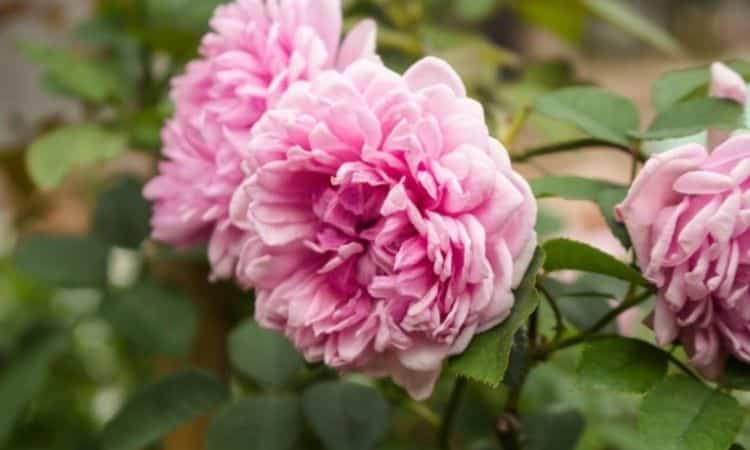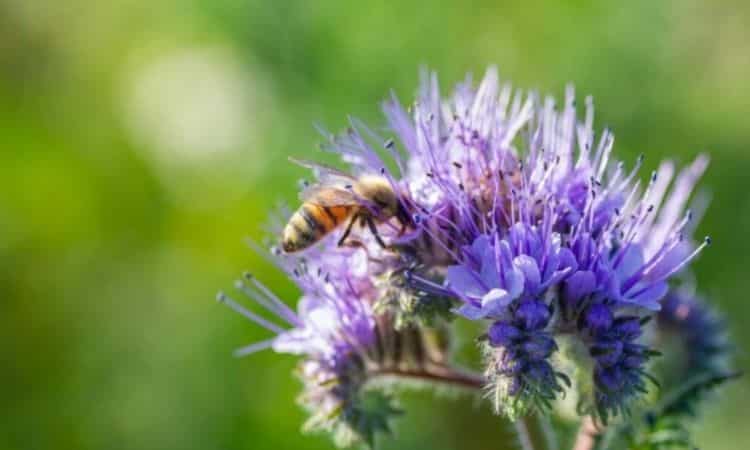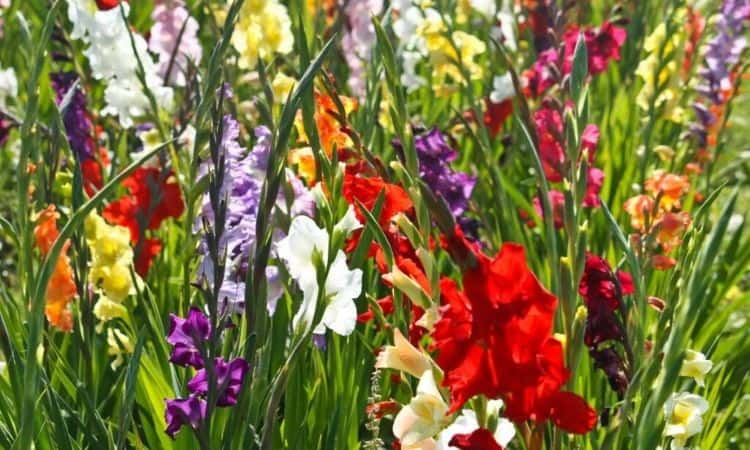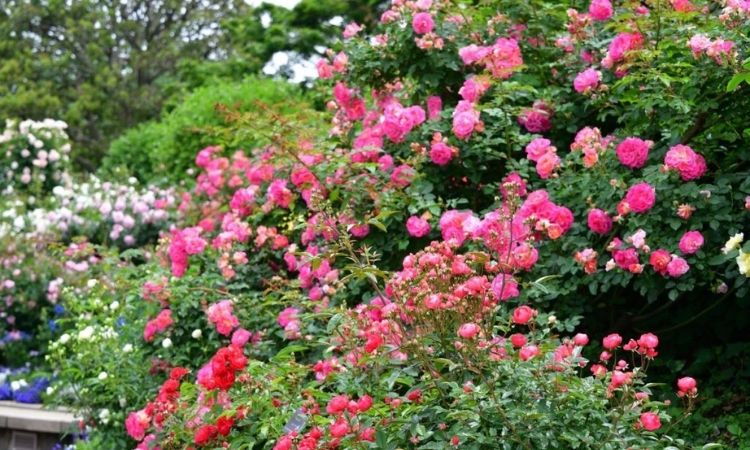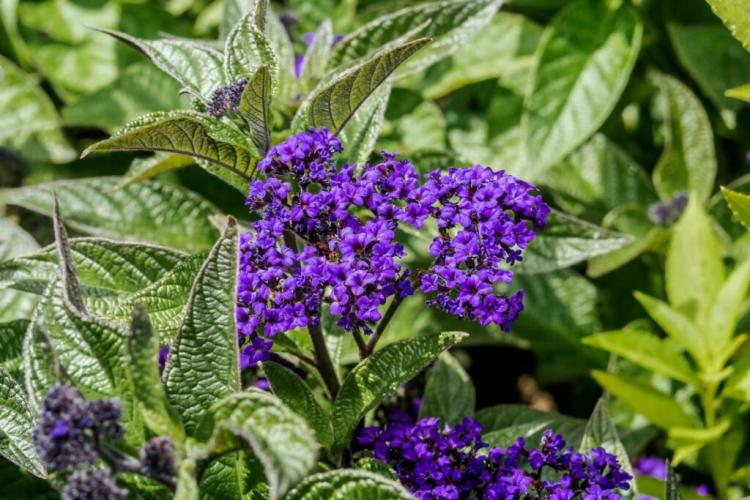Forget-Me-Not Flower: Expert Tips On Buy, Plant And Care
The blue flowers have always had a special meaning. We show you what to consider when buying, planting and caring for forget-me-not flowers. The forget-me-not ( myosotis ) is a very popular garden plant. Is that due to its beautiful appearance or the meaningful name? Probably both. What is certain is that the mostly blue, small flowers look good in both the tub and the bed and are easy to grow yourself. You can find out from us what special features there are and what to look out for when growing in your own garden. We have summarized everything you need to know about the origin, purchase, planting, and care of forget-me-nots for you in this article.
Forget-me-not flower types
Table of Contents
Forget-me-not is a whole genus of plants from the Boraginaceae family. There are over 50 different species worldwide that belong to the forget-me-not genus. The following are the most popular types of forget-me-nots:
- Forest forget-me-nots ( Myosotis sylvatica )
- Swamp forget-me-not ( Myosotis scorpioides )
- Alpine forget-me-nots ( Myosotis alpestris )
- Field forget-me-nots ( Myosotis arvensis )
- Lawn forget-me-nots ( Myosotis laxa )
There is also the Caucasus forget-me-not ( Brunnera macrophylla ), which does not belong to the Myosotis genus, but whose flowers are very reminiscent of those of the other forget-me-not species.
Forget-me-not plants can reach heights of between 10 and 30 centimeters and usually grow as bushy perennials. Forget-me-nots keep their green leaves covered with fine hairs even in winter. The flowers are five-fold and usually, appear in the familiar blue. But there are also varieties that bloom white or pink.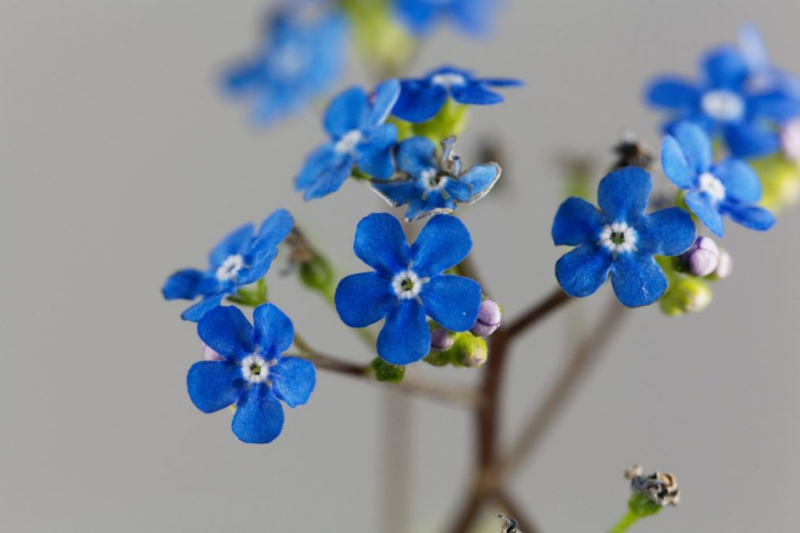
The Caucasus forget-me-not does not belong to the Myosotis genus, despite its external similarity
Forget-me-not flower: origin and meaning
The German name “Vergissmeinnicht” has been attested since the 15th century, but the plant is probably much older. It was considered a wild plant for a long time until the USA and England began to cultivate it as a garden plant in the 19th century. The name Myosotis is Greek and means mouse ear. This means the leaves of this plant genus because are not shaped like mouse ears. There are many myths and stories about the origin of the name of the forget-me-not. One of them says that lovers were once walking by the river when the girl discovered a beautiful blue flower on the bank of the river.
You might so like: Top 60 Blue Flowers For Your Home And Garden
When the boy went down the bank to pick the flower for his beloved, he fell into the river and was carried away by the current. The last thing he could say to his beloved was “Forget me not”. Another story says that the blue color of the flowers is reminiscent of the blue eyes of those newly in love who loved to give the flower to each other as a token of love and loyalty. A third myth tells that the little flower once asked God not to forget it. Hence the name. No matter where the name of forget-me-not comes from, the flower is also called that in many other countries. In England, for example, it is called “forget-me-not”, in France “ne m’oubliez pas”. And even in China, the flower translates as “don’t forget me”.
Forget-me-nots buy
If you don’t have a forget-me-not in your own garden, you have two options, either to buy a young plant or to grow your forget-me-not from seeds yourself. Forget-me-not seeds and plants can be found in many hardware stores, garden centers, or on the Internet.
You can buy forget-me-nots in hardware stores, garden centers, or on the Internet
When buying seeds, you should pay attention to the use-by date, as seeds lose their ability to germinate over time. In addition, the type and variety should play a role when buying, as they determine the location and the flower color. In the case of young plants, you should also make sure that the plant is in good health.
Plant forget-me-nots
Forget-me-nots grow both in the bed and in the pot. Below we show what you should consider when planting forget-me-nots.
Plant forget-me-nots in the bed
When planting forget-me-nots, the question arises as to whether you want to prefer your plants yourself or put purchased plants in the bed. You can prefer to keep your forget-me-nots on the windowsill in the fall. These can then be put outdoors from mid-May next year. You can also plant forget-me-not plants that you have bought outdoors in mid-May. Another option is direct sowing in the garden from June to July.
Forget-me-nots have different location requirements depending on the species. The forest forget-me-not prefers a partially shaded, never full sun. The swamp forget-me-not would like to get wet feet and therefore prefers to stand in damp locations. Both species like loose, well-drained soil with a pH of at least 6.5 to 7. When planting forget-me-nots, prepare the bed by loosening the soil and removing weeds. If you use high-quality garden soil like organic potting soil, it is not necessary to enrich the soil with compost or organic fertilizer. The plants are then placed in the ground with a row spacing of 20 centimeters and a distance of also 20 centimeters between the plants and watered.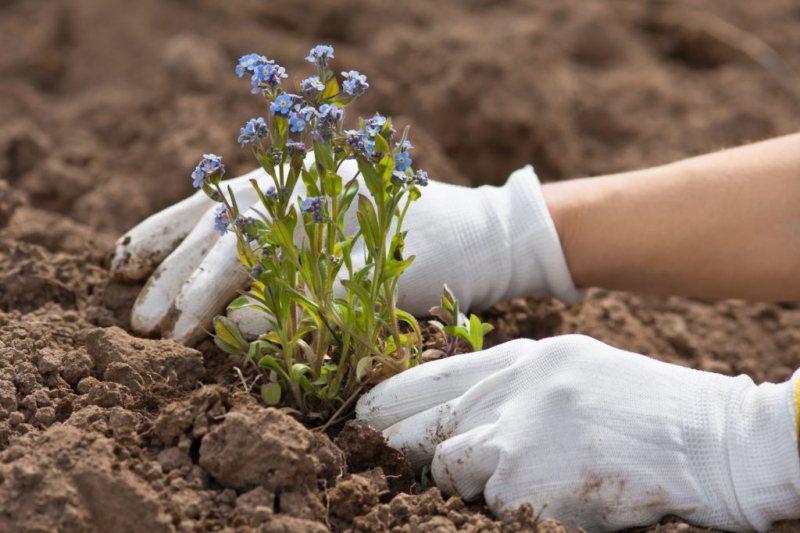
When planting forget-me-nots, the ideal planting distance should be maintained
What’s the best way to plant forget-me-nots?
- Best time to sow: in autumn
- Put plants outdoors: mid-May
- Direct sowing outdoors: From June to July
- Forest forget-me-not location requirements: Partly shaded
- Location requirements Swamp forget-me-nots: Damp and wet
- Well-drained soil with a pH of 6.5 – 7
- Loosen the soil well and enrich it with compost or organic slow-release fertilizer
- Row spacing: 20 cm
- Plant spacing: 20 cm
Plant forget-me-nots in the pot
When planting forget-me-nots in pots, you should make sure to choose a sufficiently large planter with a drainage hole. Normal potting soil or rhododendron soil is suitable as a substrate. Here, too, the peat-free Organic potting soil is ideal. The ideal planting distance in the pot for forget-me-nots is 15 centimeters. In the pot, forget-me-nots don’t like direct sunlight and prefer to be in a partially shaded location.
You might so like: Petunias Care: Planting The Best Petunias Varieties
Forget-me-not multiply
If forget-me-nots feel really at home in their location and are not cut back too early, then it will multiply through self-sowing. This is the case with the forest, Caucasus, and swamp forget-me-not species. But of course, there are also ways to multiply the forget-me-not yourself. Propagation by division and by cuttings is ideal for this purpose.
When dividing, after flowering, a large and healthy eyrie of forget-me-nots is dug out with a spade and cut with a sharp knife. Each section should have enough root mass to survive. You can then replant the sections at the desired new location.
Increase forget-me-nots by dividing:
- Dig up eyrie after flowering
- Cut with a sharp knife
- Each section must have enough root mass
- Plant section at a new location
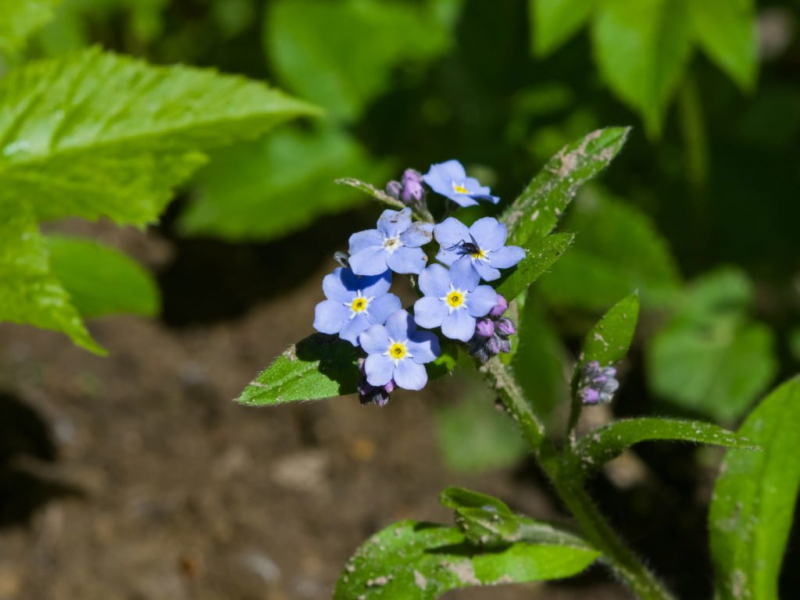
The forget-me-not can also be propagated with individual cuttings
For propagation by cuttings, cuttings are cut from the forget-me-not plant with a sharp knife between the stem and the roots. Each cutting should therefore have a piece of the root. You can coat the interfaces with some charcoal to protect the area from disease. The cuttings are then placed in a glass with water, preferably rainwater. Now, wait for roots to form on the cuttings.
As soon as the cuttings are sufficiently rooted, they can be planted in the bed or in pots. It is ideal to cut the cuttings in autumn and to overwinter the young plants in a warm place. You can then put the vigorous young plants outdoors next spring.
You might so like: Fertilize Perennials: Everything At The Right Time, Procedure And Fertilizer
Propagate forget-me-nots by cuttings:
- Cut off cuttings between the stem and the roots
- The cutting must have a bit of root
- Disinfect the interface with charcoal
- Place cuttings in a glass with rainwater
- When enough roots have been formed, the cuttings can be planted out
Maintain forget-me-nots
The forget-me-not is considered to be very easy to care for. However, there are a few points to consider. Correct watering is at the center of the correct care of the forget-me-not. Regular watering is essential, especially in summer and when cultivating in pots or tubs. You shouldn’t drown your forget-me-nots either. The top layer of soil should always be dry before you water your forget-me-not again. The fertilization of the forget-me-nots is also manageable: in the spring you can fertilize it with compost, horn meal, or organic slow-release fertilizer. Organic flower fertilizer with a long-term effect is ideally suited for this, as it releases the nutrients slowly and gently to the forget-me-nots. Further fertilization later in the year is no longer necessary.
If you want your forget-me-nots to seed themselves in the garden, then you should prune them back to just above the ground in the spring. On the other hand, if self-sowing is undesirable, then you can boldly start pruning in autumn after flowering so that the seeds do not spread around the garden.
In general, forget-me-nots are hardy and can withstand cold and frost in winter. Nevertheless, frost protection can be recommended if the plants have been freshly placed in the bed. Then you can cover your forget-me-nots with sticks or straw to protect them from severe frost.
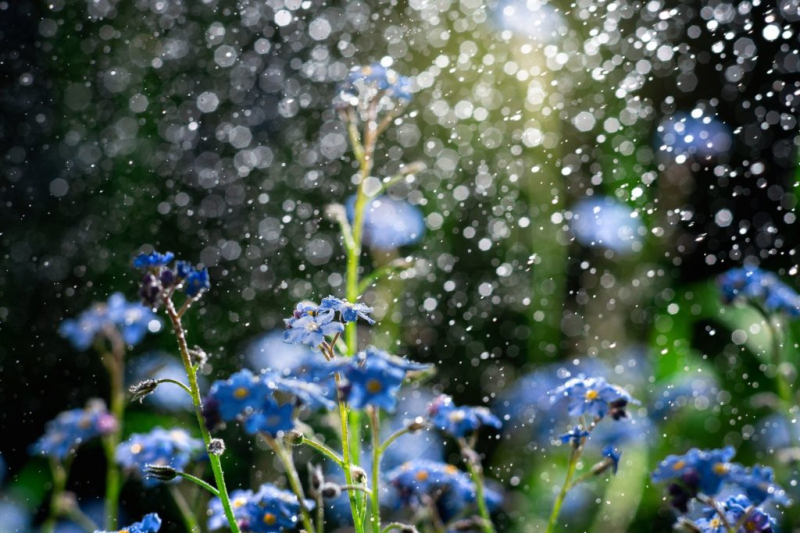
Regular watering is important when caring for forget-me-nots
What’s the best way to care for forget-me-nots?
- Water regularly
- Fertilize in spring with compost, horn shavings, or organic slow-release fertilizer
- For self-sowing, cut the plants back to just above the ground in spring
- To prevent self-sowing, prune plants immediately after flowering
- Protect freshly planted forget-me-nots from frost with brushwood or straw
Are forget-me-nots poisonous?
The leaves, flowers, and stems of the forget-me-not contain very small amounts of tannic acid, potassium, and alkaloids. These are poisonous if consumed in excess. However, the concentration of these substances in the plant parts of the forget-me-not is extremely low. So you would have to eat several kilograms of forget-me-not flowers to be poisoned.
Forget-me-not is therefore safe even for small children. Animals cannot poison themselves with forget-me-nots either. If dogs and cats nibble on it, there is no health risk. On the contrary – forget-me-nots were even considered a remedy in the past and are now used in the herbal kitchen. Although the flowers have a very low taste of their own, they are a real eye-catcher. The beautiful flowers are therefore wonderful as an ornament on cakes, desserts, or salads.
